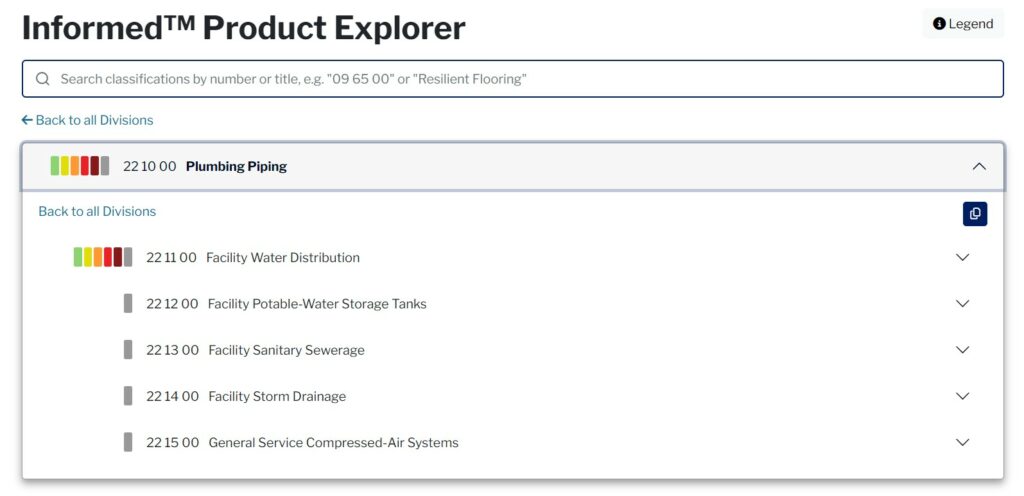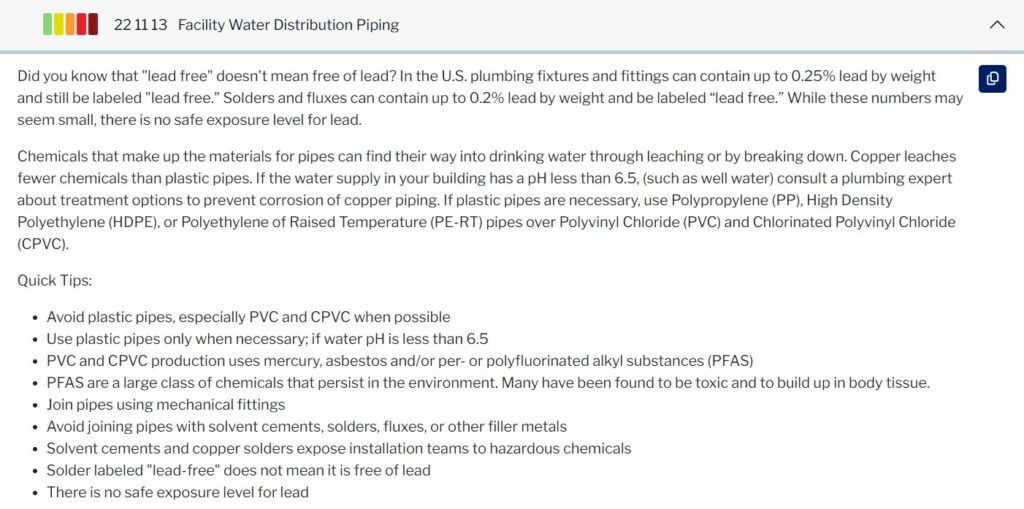How AEC Design Choices Can Protect Health
Powerful Informed™ approach ranks building products on material health
 To support their mission: “advance human and environmental health by improving hazardous chemical transparency and inspiring product innovation,” the Healthy Building Network (HBN) used two decades of research to develop an impressive new platform for architecture, engineering, and construction professionals (AEC).
To support their mission: “advance human and environmental health by improving hazardous chemical transparency and inspiring product innovation,” the Healthy Building Network (HBN) used two decades of research to develop an impressive new platform for architecture, engineering, and construction professionals (AEC).
Safe Piping Matters recently spoke with Anjanette Green, HBN’s Senior Director of Product Transformation, to learn how it can help project teams identify healthier building products, including the design and specification of plumbing systems.
Q: First, can you summarize what Informed™ is?
A: Informed™ is a materials modeling approach that provides AEC project teams with actionable guidance to quickly screen and select healthier product types that factor in important criteria related to material health. Informed™ ranks products from worst (red) to best-in-class (green), taking into account human and environmental health impacts across all stages of the product life cycle, from extraction and manufacture, installation, occupancy, and end of life. Because the product guidance is mapped to CSI, it has the potential to integrate with existing workflow tools.
Q: How should architects use it?
A: As a first step before product selection, architects should use Informed™ to identify product types for their material health ranking. When they see a chemical or material that is ranked red, they should look to level up: from red to orange, orange to yellow, and yellow to green. We know that it’s unlikely all materials will be ranked green, but our research shows that any step out of the red zone is a meaningful improvement.
Architects should use Informed™ in the charrette and schematic design phases. If product screening doesn’t occur until construction drawings, requirements might be too constricted, costing teams an opportunity to incorporate healthier materials.

Q: What do you hear from architects regarding what they need to help with material selection?
A: Today a main problem is that existing resources related to material health can be overwhelming and confusing, so people end up doing business as usual instead of looking for better alternatives. Many professionals, including me, were trained on how to design and how to draw, but not how to address chemicals and human health. They can end up feeling like sustainable design projects turn into a kind of Whack-a-Mole as they make tradeoffs.
Q: How did HBN create this approach?
A: Informed™ is based on HBN’s 20+ years of research into healthier building products. We have long been the science partners to industry leaders and our product guidance is based on rigorous, science-based research. Our researchers and scientists didn’t just take data off of a safety data sheet and plug it in. They pulled patents and did testing. We then went through a thorough peer review, including input from two large manufacturers. Without bringing in the manufacturer perspective, we would be doing the industry a huge disservice. We need to collaborate across the aisle to solve the problems we’re facing, instead of creating an environment that’s defensive or combative. The result is an intuitive screening approach that architects can use to “level up” their designs.

Q: What do you see as the status of building product manufacturing today? Can you identify any trends?
A: We are on the precipice of amazing change. People increasingly realize that materials that seem cheap to buy and use actually have price tags on the backs of people throughout the manufacturing supply chain and fenceline communities who live near where these materials are made, like “Cancer Alley” in Louisiana.
Thinking critically and raising awareness on these issues will help to advance the industry. As professionals, we have to keep asking, “What does this do to humankind?” and take direct responsibility for making improvements. The solutions are there, but not enough people are asking.